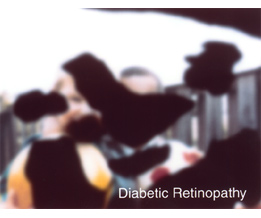The macula is filled with cones, the nerve cells that are responsible for sensing light. When the macula begins to fill with fluid, the ability of those cells to sense light is impaired, causing blurred vision that can be severe.
Diabetic macular edema affects up to 30% of people who have had diabetes for 20 years or more, and if untreated, 20 to 30% of people who have it will experience moderate visual loss.
What Causes Diabetic Macular Edema?
Diabetic macular edema is a result of another complication of diabetes, called diabetic retinopathy, in which blood vessels in the eye are damaged, allowing fluid to escape.
There are two kinds of diabetic macular edema, classified by the method in which fluid enters the macula:
Focal DME is caused by tiny abnormalities in blood vessels, known as microaneurysms.
Diffuse DME is caused by widening of retinal capillaries, the thin blood vessels that are located in the back of the eye.
The severity of diabetic macular edema is dependent upon several factors:
-
Degree of diabetic retinopathy
-
Length of time the patient has had diabetes
-
Type of diabetes
-
Severe hypertension, very high blood pressure
-
Fluid retention
-
Hypoalbuminemia, or low protein in body fluids
-
Hyperlipidemia, or high fat levels in the blood
Symptoms of Diabetic Macular Edema
Patients who suffer from diabetes have a risk of developing DME over time.If you have diabetes you should have your vision checked regularly. Be sure to mention if you notice changes in your vision such as:
-
Blurred vision
-
Double vision
-
Eye floaters
Treatment for Diabetic Macular Edema
Two surgical procedures are commonly performed to treat diabetic macular edema, both aimed at maintaining vision for the patient, and reducing future vision loss:
Laser treatment for focal DME: Uses a laser light to close leaking blood vessels, preventing more fluid from entering the macula. Three months after treatment, the patient should be rechecked to make sure the DME is responding to therapy.
Laser treatment for diffuse DME: Uses grid laser treatment to narrow dilated blood vessels. As with focal DME treatment, the patient should be rechecked three months after surgery to make sure that the DME is responding to therapy.